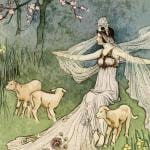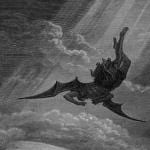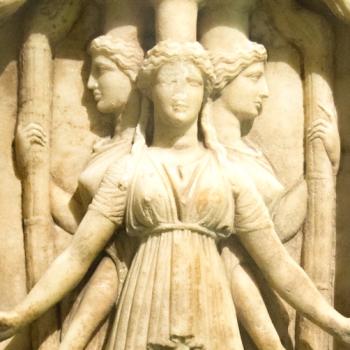Scott Cunningham’s Wicca: A Guide for the Solitary Practitioner is now over thirty years old, and parts of it have aged poorly. It’s certainly not a bad book by any means, but it’s very much a product of its time (1989). Wicca, Witchcraft, and Paganism are constantly evolving so this shouldn’t be much of a surprise. Most Witchcraft books don’t age well (possibly with the exception of Paul Huson’s Mastering Witchcraft), why should Cunningham’s Wicca be any different?

What we think of as “required” or “recommended” reading has a lot to do with what we read when we are first starting out. We tend to recommend the things we read to newcomers. I can just hear the reasons for doing this in my head: “Why would I need to read any new “beginner” books if I’ve been practicing the Craft for twenty-five years? Wouldn’t the ones that worked me for twenty or thirty years ago be enough?” I’d also argue that we tend to have a very real emotional attachment to the first books we pick up.
Cunningham’s Wicca has been a touchstone to several generations of Wiccans. I’m guessing that it was influential for a lot of the later Baby Boomers. As a Gen X kid, this was required reading among my peers. I think Millennials picked it up after us because it was easily available and generally highly reviewed. It also remains a best seller on Amazon thirty years later, which means even younger generations are probably reading it.
Despite the criticisms that are coming your way soon enough, I’d never argue that Wicca is a bad book, in fact there’s a lot to recommend it. Cunningham has been popular for forty years because he’s a good writer. He explains things succinctly without a lot of fuss. If you want to practice Wicca right-away this book allows you to do that. Cunningham’s prose is warm and inviting, and even funny at times. His footnotes had me giggling during my re-reading. There’s good information in this book, but there’s also a lot of stuff that’s very out of place in the Wiccan world of 2020. (I write that knowing that your experiences may differ, and I’m looking forward to the commenter that suggests they do everything exactly as Cunningham said to in 1989.)
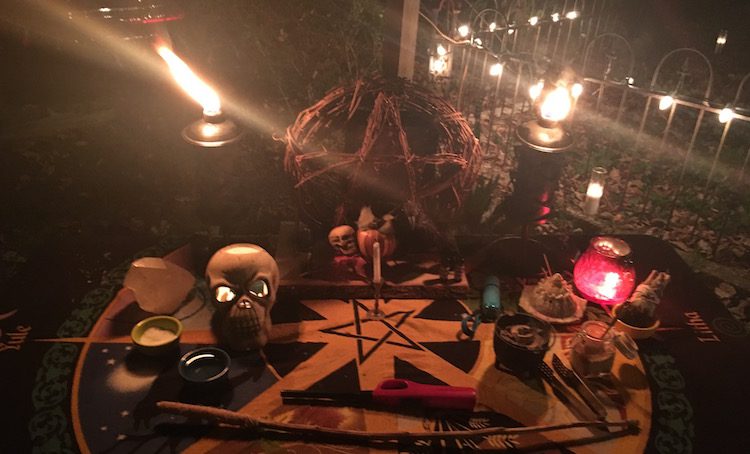
HISTORY
Issues arise in Cunningham the moment you get to the first chapter, “Wicca and Shamanism.” In fairness to Cunningham, there are no grandma stories in his book, but he does choose to place Wicca’s roots in shamanism. Shamanism is more specific than many people believe it is, and the use of therm in conjunction with practices like Wicca feels especially frowned upon in many parts of the world, especially the USA. (I hear and see my friends across the pond using the term more often than we Yanks.)
Wicca is the end-result of many things, and shamanism is not among them. Do Wiccans sometimes use drums? Yes. Do many shamans also use drums? Yes. But that does not mean the two are related. Witches as shamans isn’t a dominant theme of the book, but it comes up enough to be problematic. Near the end of an explanation on the Goddess and God, Cunningham writes “We are the shamans.” No, we aren’t the shamans, the shamans are the shamans, we are the Witches!
Cunningham mostly avoids bad “Wicca as an unbroken chain” type statements, but he comes close to it on a chapter about the circle and the altar:
“The Pagan rites went underground when they were outlawed by the newly powerful Church. No longer did meadows know the sounds of voices chanting the old names of the Sun gods, and the Moon hung unadorned in the nighttime skies.
The Pagans grew secretive about their rites. Some practiced them outside only under the cover of darkness, others brought them indoors.
Wicca has, unfortunately, inherited this last practice . . . outdoor ritual is a novelty.”
There are a lot of problems here, the romanticized ancient Pagans who apparently didn’t worship in the temples they had constructed, the shaming of people who practice primarily indoors . . . . More than anything else, Wicca emerged from the Western Magical Tradition, a tradition that was primarily practiced indoors. Outdoor ritual is great and there’s a lot to recommend for it but people should always do what works best for them, whether it’s indoors or out.
Cunningham doesn’t have much to say about the histories of the sabbats, but he offers some “lore” about each one. At “Mabon” he writes that it is traditional to walk through a forest and “gather dried seed pods and dried plants.” Traditional to who? There’s no ancient celebration of Mabon or even the Autumn Equinox. It’s just weird to me today to mention a “tradition” with no attribution considering how much we know about the sabbats and how holidays have developed.
In no way do I think that Cunningham is trying to mislead his readers or lie about anything. He was doing the best he could at the end of the 80’s, but these sections have not aged well.
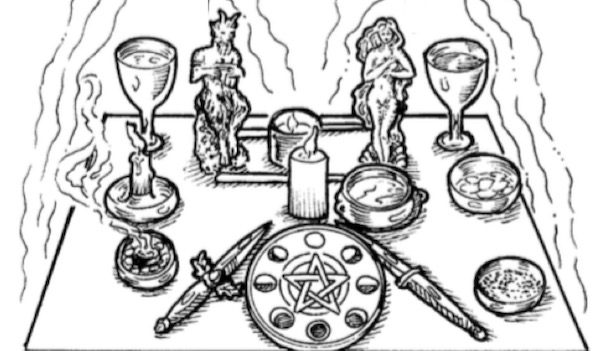
TOOLS
It was popular to “gender” tools in Wiccan-Witchcraft up until the 2000’s, and I’m guessing there are some of you out there who still do that. But my athame is just a knife, it’s not a penis, and I have no idea why it’s a “male” tool. (The idea that my athame is phallic has always made me laugh. A phallus like a knife? Think about it, ouch!) My chalice might symbolically represent a womb if you feel the need to go that route, but at the end of the day it’s a drinking vessel.
The idea of gendered tools is double-downed on in Cunningham’s “altar setup” which requires “male” tools on one side and “female” tools on the other. Growing up in the 90’s I heard a lot about “male and female” tools, but never paid a lot of attention to it. I’m guessing most of you didn’t either, because it’s silly.
There are other little anachronisms in Cunningham’s tool section. Did you know that the cauldron is the Witch’s tool “par excellence?” Neither did I, because it’s not. Cauldrons are useful, there’s even a really good book just about cauldrons out there, but not every Witch I know has a cauldron. And while I’ve owned a small cast iron cauldron for years, I’ve never used it very much in ritual. (I’d argue that the athame, which Cunningham calls a “magic knife,” is the most important tool in Wicca.)
Cunningham also lists a “crystal sphere” as an essential working tool, something I’ve never seen in any other Witch book. Yes, Wiccans use crystals, but I wouldn’t think of one as a primary working tool. It’s just odd, and speaks to the New Age influence that washed over the Craft in the 80’s and into the 90’s.
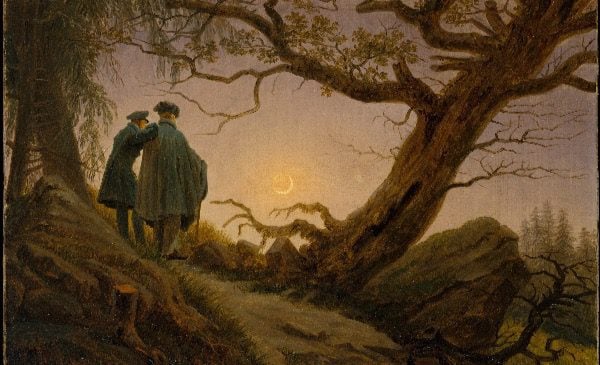
DEITY
Cunningham’s interpretation of deity straddles two planes of thought. The dominant one is the idea that “all goddesses are one Goddess” which can then be linked to an original cosmic power. He then makes allowances for the use of specific deities beyond “Goddess and God” and “Lord and Lady.” It’s not a bad approach, but it’s also not very complex and Cunningham doesn’t really allow much space for other theories.
It’s also confusing as to how much he believes in (or doesn’t believe in) deities. Here Pan is not Pan, the forest god of Arcadia, instead he’s part of “The God” which is one of the “creative forces of the universe.” You might agree with this, you might not, but it’s not the Wicca I see practiced by my friends and peers. I’ll also admit that as a “Horned God Guy” I feel like Cunningham intentionally downplays the Horned One. Cunningham’s god is “sometimes seen as wearing horns.” Sometimes? The Horned God was once essential to Wicca, here he feels like an afterthought.
Wicca is built on “doing” not “thinking.” There are agnostic Wiccans, committed polytheist Wiccans, and (probably) a great majority who operate between “all goddesses are one Goddess” while also acknowledging individual deities.
Cunningham’s ideas about deity are probably not as binary as they sound here. There are just enough hints in the text at something else, and again, this book was published in 1989. It reflects the values of the time, which was primarily (perhaps only) Goddess and God.
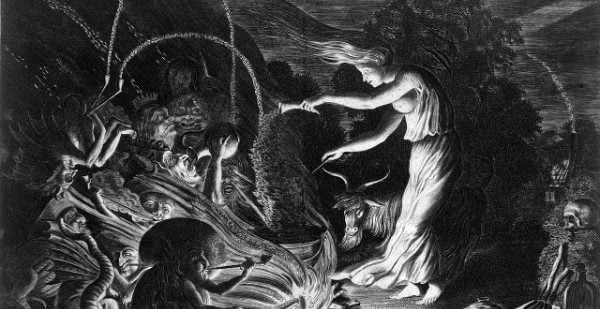
THE SABBATS & RITUALS
Some of the bewilderment I feel when reading about the sabbats in Wicca probably comes from Wiccan pathways no longer walked upon. When Cunningham writes that Imbolc was once known as the Snowdrop Festival I don’t doubt that someone called it that back in the 80’s, I just don’t know anyone who does that now. (Also Lupercalia is not Imbolc!) It’s just sort of weird.
Cunningham illustrates the Wheel of the Year through the old “Goddess and God meet, have sex, God sacrifices himself, Goddess gives birth to the God, and then the cycle is repeated” but it’s a unique version of the trope. Did you know that Imbolc “marks the recovery period of the Goddess after giving birth to the God?” I didn’t either. To add to the confusion the God is a “young, lusty boy” at Imbolc, who I guess has got eyes for his Mom? If she’s still recovering she has yet to be reborn I suppose.
We don’t really know very much about how the sabbats were celebrated 2000 years ago, and for several decades it was assumed that every Christian holiday was an echo of an earlier Pagan one. There’s an ounce of truth to this with some of the sabbats, but the case is generally overstated. We don’t celebrate Samhain like the ancient Irish-Celts did, and that’s OK. Yule was probably never “one of the most holy Pagan days,” and was transformed to a “time of gross commercialization” as early as Rome’s January Kalends 2000 years ago.
Early Pagan and Witch rituals in books were generally not very good, the ones in Wicca are especially flat. The ritual for Beltane suggests making tokens to celebrate the “wedding” of the Goddess and God and hanging those on a tree. There are two dozen words to say, but that’s essentially the ritual. Lughnasadh involves holding a sheave of grain over your head, saying some words, and then sprinkling the grains on your altar. As a bonus you get to eat a piece of fruit!
As I’ve written earlier, most early rituals in books weren’t very good, so Cunningham is not alone here. But I fail to see how anybody can get much out of these rites. There’s nothing, for lack of a better world, transformative about them. They just feel like quick acknowledgements of the change of the seasons in the British Isles and the American Northeast.
That’s another issue I have when people discuss sabbat rituals. Sabbat rituals should fit into where you live, not where Imbolc was first celebrated 2000 years ago. If it’s winter on February 1, celebrate Winter and not Spring. Cunningham admits that his book is simply a beginning and not an end, but it could have done better here, even thirty years ago.
SHEATHING THE POWER
I have never used the term “sheathing the power” (or “earthing the power” which he also uses) but it’s a turn of phrase used by Cunningham to describe grounding and the ceremony most of us call “Cakes and Ale” (or “Cakes and Wine”). It’s not a bad description of what’s going on, it’s just unrepresentative of Wicca today.
Again, Wicca: A Guide for the Solitary Practitioner is not a bad book, but it hasn’t aged well, and is probably not the first thing we should recommend to newcomers. Cunningham’s picture resides on the shrine of my Mighty Dead, and I’m not looking to take it down ever. If Cunningham were still alive I believe he’d update Wicca to better reflect today, instead we are left with a snapshot of 1988 that’s probably not as good or as vital as many believe it is.


